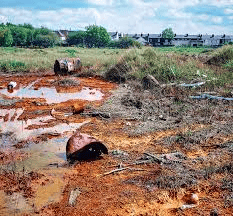Industrial facilities are known for causing land pollution, which includes the deposition of waste materials on the land surface and below it. This process can harm groundwater, soil, and air, and can result in unsightly conditions and nuisances. The following are some examples of land pollution caused by industrial facilities. What is land pollution? What is the impact on a nearby community?
Chemicals and other hazardous wastes that are generated by industrial facilities cause pollution. These chemicals and other substances can harm the environment and human health, as well as the water supply and wastewater sanitation systems. In addition, accidental spills, leaks, and deterioration of solid waste infrastructure can also pollute waterways. In fact, the cleanup of these industrial sites is one of the most overlooked aspects of recovery efforts. But there are plenty of ways to mitigate the effects of industrial wastes on land. For more details on Contaminated Land Remediation, go to a site like https://soilfix.co.uk
This type of pollution permanently alters land. It contaminates the soil, impairs water quality, and can even cause wildfires. And what’s more, it kills millions of animals every year. Hundreds of thousands of marine species consume plastics, including nearly every species of seabird.
Despite its high prevalence, it is a relatively new problem that has received little attention. Most of the wastes that contribute to land pollution are toxic or non-biodegradable. There are three main types of land pollution. These include: sediments, liquids, and gases.
Land pollution is an issue affecting every country in the world. Various human activities cause soil pollution, including overgrazing, mining, and massive areas of landfill. In addition, chemicals and toxins from land pollution end up in waterways, flora, and animals. And the effects of land pollution are devastating – air pollution is one of the main causes of breathing problems, water pollution is a major cause of disease and contaminated land is the source of many of the world’s disasters.
While land pollution can be stored properly, it is also not always safe to store in landfills. Chemicals from land pollution leak into less environmentally-friendly storage facilities. For example, many regions harbour tons of waste – and their waste collection systems are pitiful. In some countries, garbage collected from gold-standard systems ends up in a landfill with little regulation. What’s worse, this land pollution often contains harmful chemicals and pesticides. Some plastics contain phthalates, while polyvinyl chloride is linked to cancer and respiratory disorders.


